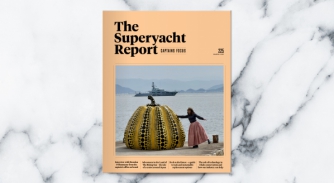Rethinking superyacht operations: a call for culture change
Christophe Bourillon, CEO of PYA, on the cultural gap between the standards owners apply in their corporate lives and those they bring to their yachts…
The double standard: yacht vs aircraft
Many superyacht owners are CEOs of global corporations, accustomed to rigorous standards in human resources, sustainability and corporate responsibility. However, when it comes to their yachts, these same individuals often treat the vessel as a private bubble, exempt from the rules and respect they uphold elsewhere. This is starkly evident in the way captains are treated compared to aircraft pilots.
It is all about ’professional respect’. Owners rarely question a pilot’s authority on safety, weather or technical issues, yet may pressure yacht captains to take risks or overlook fatigue and unresolved problems. This double standard undermines safety and morale, especially as yachts become more complex and the consequences of poor decisions more severe. This leads to ‘operational pressure’ and a number of captains do report being asked to depart in unsafe conditions or with tired crew – requests that would be unthinkable in aviation. This not only endangers lives but also erodes the professional standing of the captain.
Bridge design: aesthetic vs functional
Unlike aircraft, where cockpit design is standardised and certified by test pilots for safety and ergonomics, yacht bridge design is often dictated by aesthetics. This can lead to non-standardised layouts whereby controls and displays may be placed for visual appeal rather than operational efficiency, increasing the risk of error.
The same goes with the drive for a paperless bridge: the push for digital-only navigation, without adequate back-up or training, can create vulnerabilities. Regulatory bodies like the Red Ensign Group are beginning to address these issues, but more industry-wide focus is needed.
The evolving role of the captain
Today’s superyacht captain is far more than a seafarer. As yachts grow larger, captains must act as CEOs, managing multi-million-dollar assets and large teams; HR managers, handling recruitment, training and conflict resolution; mental health counsellors, supporting crew welfare in a high-pressure, isolated environment; and crisis managers, prepared for emergencies ranging from technical failures to medical incidents.
However, most captains receive little formal training in these areas. Leadership, crisis management and mental health support should be core components of captaincy training, not afterthoughts.
Crew welfare: beyond minimum standards
While regulations like the Maritime Labour Convention (MLC) set minimum standards for accommodation and working conditions, compliance alone is not enough. The reality for many crew members includes long hours and job insecurity. Despite the glamorous image, crew often work extended shifts with little downtime, leading to fatigue and burn-out, along with mental health challenges, where isolation, high expectations and lack of support can take a toll.
Proactive measures – such as access to counselling, better connectivity and structured time off – are essential, as are professional development – crew need clear career pathways, ongoing training (onshore and especially on board) and recognition for their contributions. This not only improves retention but also enhances operational excellence.

Owners must treat captains and crew with the same respect and trust they give
to other professionals, like pilots or senior executives. This means deferring to their expertise
on safety and operational matters.
The need for a culture shift
To truly improve superyacht operations, a fundamental culture change is required.
Respect for professionalism: Owners must treat captains and crew with the same respect and trust they give to other professionals, like pilots or senior executives. This means deferring to their expertise on safety and operational matters.
Adoption of corporate standards: The best practices owners use in their businesses – transparent HR policies, sustainability initiatives and social responsibility – should be applied on board. This includes fair contracts, diversity and inclusion, and environmental stewardship.
Collaborative design: Involve captains and senior crew in bridge and systems design to ensure functionality and safety are prioritised over aesthetics.
Embracing technology and data: Technological advancements offer opportunities to enhance operations and working conditions:
• Smart yachts: IoT [Internet of things] devices and data analytics can optimise maintenance, improve safety and reduce crew workload by automating routine tasks.
• Predictive maintenance: Data-driven approaches anticipate equipment failures, minimising downtime and stress for crew.
• Sustainable operations: Innovations in energy efficiency and waste management not only benefit the environment but also align with the values many owners espouse in their corporate lives.
Recommendations for change
Mandatory leadership and crisis management training: Make these skills a requirement for captains and senior crew.
Standardise bridge and crew cabin design: Develop industry-wide guidelines, with input from operational professionals, to ensure safety and usability and appropriate crew rest.
Enhance crew welfare: Go beyond regulatory compliance by providing mental health support, fair working hours, and career development opportunities.
Transparent communication: Foster open dialogue between owners, captains and crew to build mutual respect and understanding.
The superyacht industry stands to benefit enormously from a culture shift that aligns on-board operations with the high standards owners uphold elsewhere. By respecting the professionalism of captains and crew, prioritising safety and welfare, and embracing innovation, the industry can ensure that superyachts remain not only symbols of luxury but also models of operational excellence and responsible leadership.
Owners should see their yacht as an extension of their corporate values, not an exception to them.
This article first appeared in The Superyacht Report – Captains Focus. With our open-source policy, it is available to all by following this link, so read and download the latest issue and any of our previous issues in our library.
Profile links
Professional Yachting Association
NEW: Sign up for SuperyachtNewsweek!
Get the latest weekly news, in-depth reports, intelligence, and strategic insights, delivered directly from The Superyacht Group's editors and market analysts.
Stay at the forefront of the superyacht industry with SuperyachtNewsweek
Click here to become part of The Superyacht Group community, and join us in our mission to make this industry accessible to all, and prosperous for the long-term. We are offering access to the superyacht industry’s most comprehensive and longstanding archive of business-critical information, as well as a comprehensive, real-time superyacht fleet database, for just £10 per month, because we are One Industry with One Mission. Sign up here.
Related news

The Superyacht Report 225: Captains Focus – out now!
Real stories from the helm on leadership, operations, culture and life at sea hot off the press. Get your digital copy of TSR 225 here
Opinion
Related news
The Superyacht Report 225: Captains Focus – out now!
6 months ago
NEW: Sign up for
SuperyachtNewsweek!
Get the latest weekly news, in-depth reports, intelligence, and strategic insights, delivered directly from The Superyacht Group's editors and market analysts.
Stay at the forefront of the superyacht industry with SuperyachtNewsweek



